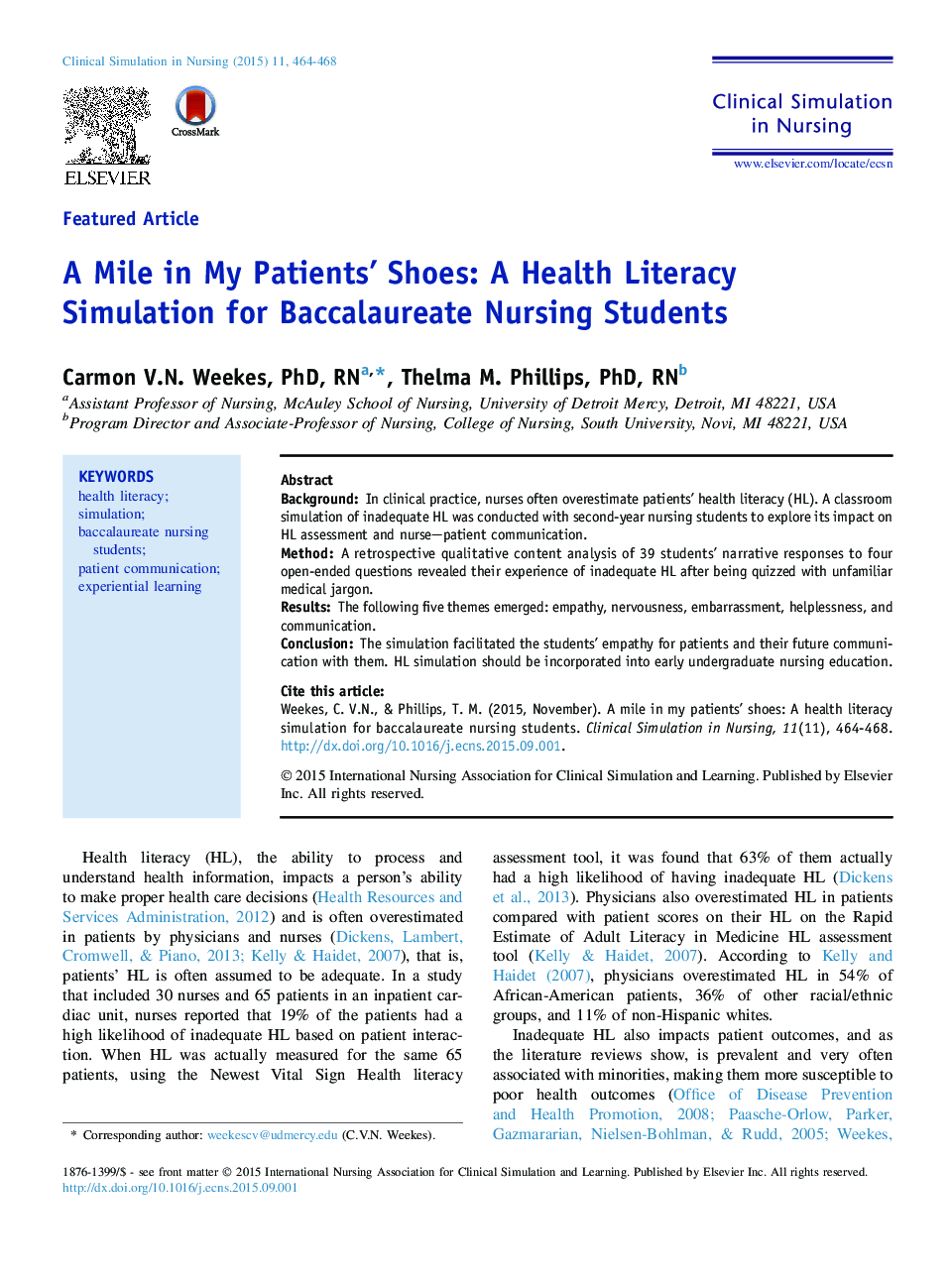| Article ID | Journal | Published Year | Pages | File Type |
|---|---|---|---|---|
| 2645694 | Clinical Simulation in Nursing | 2015 | 5 Pages |
•Simulation can be incorporated into a large classroom format for nursing students.•Simulation impacts student nurses valuing health literacy (HL) assessment of all patients.•Introducing HL assessment is important before first clinical rotation.•Empathy for patients with inadequate HL is fostered through simulation.
BackgroundIn clinical practice, nurses often overestimate patients' health literacy (HL). A classroom simulation of inadequate HL was conducted with second-year nursing students to explore its impact on HL assessment and nurse–patient communication.MethodA retrospective qualitative content analysis of 39 students' narrative responses to four open-ended questions revealed their experience of inadequate HL after being quizzed with unfamiliar medical jargon.ResultsThe following five themes emerged: empathy, nervousness, embarrassment, helplessness, and communication.ConclusionThe simulation facilitated the students' empathy for patients and their future communication with them. HL simulation should be incorporated into early undergraduate nursing education.
